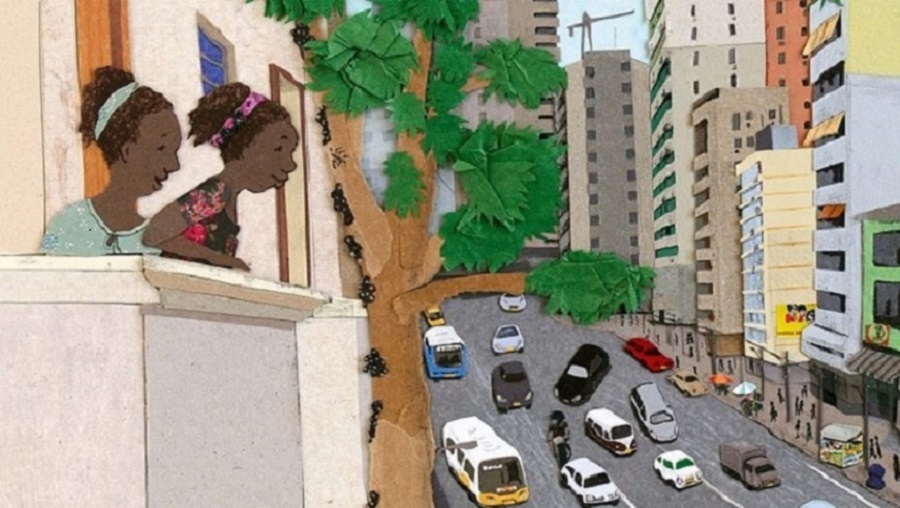German kidsʹ books need more dark-skinned protagonists

Migration, integration, identity, diversity – these are the buzzwords of current socio-political debates. They have also thrust children’s literature increasingly into the public eye. When it comes to cultural diversity, children’s books are both mirrors of society and screens onto which society projects its values. In 2013, for instance, a public debate erupted over words with racist or sexist connotations in children’s classics and whether they should be changed in new editions.
In the latest German edition of Pippi in the South Seas, for example, Pippi Longstocking’s father is referred to as the “South Sea King” and not, as in the original, as the “King of the Negroes”. The revision was given a mixed reception: some commentators saw it as an appropriate excision of racism, others called it censorship.
The discussion is not really new. Back in the 1970s, questions were raised about the perspective from which people of different cultures should be presented; what space, and how much of it, should be given to their otherness. For anyone growing up in the 1960s and 1970s, otherness took the form of fat negro kings who had to be defeated, simple-minded African villagers encountered by white explorers or black orphans sent to Europe by parcel post.
That perspective changed over the years. Social conflicts and xenophobia became issues, so did the conditions in which minorities live. But one thing did not change: with few exceptions, those who wrote about Indian orphans, about the history of Africa or about life in US Indian reservations were white Europeans or Americans.
[embed:render:embedded:node:19078]
Diversity and sensitivity
Thirty years on, identity and diversity are more topical than ever. In 2015, hundreds of thousands of migrants reached Europe. And the first children’s books with distressing stories of displacement were soon on the bookstands. Some were works of literary fiction and dealt with the issue of migration in depth. But others showed how difficult it is to write about otherness without resorting to stereotypes, attributions and simplifications.
Since then, “diversity” has been the mantra of the children’s book market. Publishers are under growing pressure to reflect this (undefined) diversity in their catalogues. They increasingly hire “sensitivity readers” to check texts for racist, colonialist, discriminatory or marginalising language and connotations. Whether that alone is sufficient, however, remains doubtful. A study published by the British Arts Council in 2018, for example, shows that social diversity is hardly reflected at all in the Anglo-Saxon children’s book market. There are no comparable figures available for the German-speaking world, but there is clearly a deficit here as well. The picture book market still struggles with dark-skinned protagonists. Even today, authentic voices and images from other cultural backgrounds are rarely found at the larger publishing houses.
Voices from other cultural spheres
One positive aspect of the German book market is the high percentage of translations that figure in it. In 2017, they accounted for around 20 percent of all new titles in the children’s book department. Translations per se do not guarantee diversity, but literature from a different linguistic or cultural region is intrinsically “other”.
Cultural diversity in children’s literature has also long been promoted by a number of small publishers. Baobab Books, Edition Orient and Edition Bracklo are just a few examples. Baobab Books in Switzerland publishes children’s and young adult books from all over the world in German translation. Edition Orient feeds modern oriental literature into the German book market and Edition Bracklo specialises in multicultural children’s books. Reprodukt and Avant are important publishers in the graphic novel sector.
But if children and young people are to find a diverse and liveable world in books, more needs to be done than just calling on publishers to embrace diversity. Authors, translators, booksellers, educators, reviewers and readers need to be prepared to enter uncharted territory.
It is therefore particularly pleasing to see initiatives launched to help publicise children’s books that reflect diversity and present “other” perspectives. One example is the “KIMI-Siegel”, a seal of distinction established in 2019 for new children’s titles that do not feature stereotypes or discriminatory language. Another is the “Welcome to my library” project in the German state of Saxony-Anhalt, which creates intercultural partnerships between migrant organisations, libraries and childcare facilities.
Sonja Matheson
Translated from the German by Malcolm Bell
Sonja Matheson is executive director and programme director of Baobab Books in Basle. After an apprenticeship in publishing and a number of years working as an arts journalist, she was a project director and executive committee member of "terre des hommes Switzerland" from 1998 to 2004.